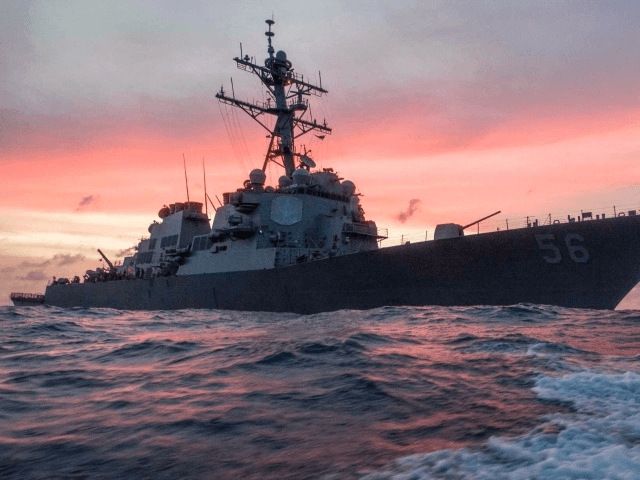WASHINGTON, DC — U.S. Navy leadership deficiencies and human error are responsible for five serious “mishaps” in the Pacific last year that resulted in the loss of 20 sailors and “degraded long-term operational capabilities,” two top officials from the American military branch told lawmakers.
The embattled leader of the Naval Surface Forces, Vice Adm. Thomas Rowden, resigned from his post on Thursday, the same day that the Navy chiefs testified before a House panel regarding the fatal incidents — including the two high-profile collisions that left 17 sailors dead.
On Tuesday, the U.S. Navy revealed it is considering “possible criminal charges” against the former commanding officers of the USS Fitzgerald and the USS John S. McCain and three other officers. The charges include “dereliction of duty, hazarding a vessel, and negligent homicide.”
In written testimony prepared for a joint hearing of the House Armed Services Subcommittees on Readiness and Seapower, U.S. Adm. John Richardson, the chief of naval operations, declared:
Our Navy experienced [a total of] five serious incidents in the Pacific [last year] resulting in the loss of 20 dedicated Sailors. Our thoughts and prayers remain with our fallen shipmates and their families, who will always be part of our Navy Team. Our investigations into these incidents revealed that these mishaps were due in large part to human error and failures of leadership as we took our eye off of mastering the basics in seamanship and navigation.
While testifying alongside Adm. Richardson, U.S. Navy Secretary Richard Spencer also acknowledged that leadership failures and human error fueled last year’s deadly naval accidents.
Referring to a review of the two high-profile incidents focused on the causal conditions and contributing factors, Spencer noted in his prepared testimony:
The Strategic Readiness Review team’s assessment determined that today’s readiness deficiencies are not traceable to any single policy or leadership decision, but rather the cumulative effect of well-meaning decisions that were designed to achieve short-term operational goals. Those decisions, unfortunately, produced unintended, and unacceptable, negative consequences which degraded long-term operational capabilities.
…
The Strategic Review team concluded that Navy leaders gradually accepted greater risk to accomplish assigned missions. Standards designed for safe and effective operations were relaxed to meet operational and fiscal demands, which led to a continuous accumulation of risk.
Citing corrective actions stemming from the review, Adm. Richardson revealed that the U.S. Navy is still in the process of “completing” Ready for Sea Assessments and carrying out “maintenance” on some of its ships, without specifying how many, only telling lawmakers:
No [U.S. Navy] ships are operating uncertified for their missions assigned, and Ready for Sea Assessments have been conducted on [U.S. Navy] cruisers and destroyers with the exception of those completing or in maintenance, in order to re-baseline existing afloat certifications.
These remaining ships are either scheduled for assessments in the very near term, or are being transitioned to our new force generation model.
Adm. Richardson identified other corrective actions that are still in progress as:
overhauling the seamanship, professional education, shipboard qualification standards, and risk management curricula (in the next three months) … and reviewing of all inspection, certification, and assist visit requirements to determine the optimal balance between operational assessments and burdens (in the next three months).
As the U.S. Navy implements corrective actions, the admiral conceded America’s enemies remain “adaptive and increasingly assertive.”
Soon after one of the deadly crashes last August in which the Navy destroyer USS John S. McCain collided with an oil tanker, Navy superiors relieved the commander of the fleet that sustained the two crashes — one of four accidents in Asia at the time.
In a statement, the Navy announced that it had relieved Vice Adm. Joseph P. Aucoin, the head of the Seventh Fleet, America’s largest overseas fleet, in connection with the four accidents between January and August, including the two fatal collisions that killed the 17 sailors.
The second high-profile crash involving the Navy destroyer USS Fitzgerald colliding with a merchant ship took place on June 17, killing seven sailors nearly two months before the USS John S. McCain incident took the lives of ten others on August 21.

COMMENTS
Please let us know if you're having issues with commenting.